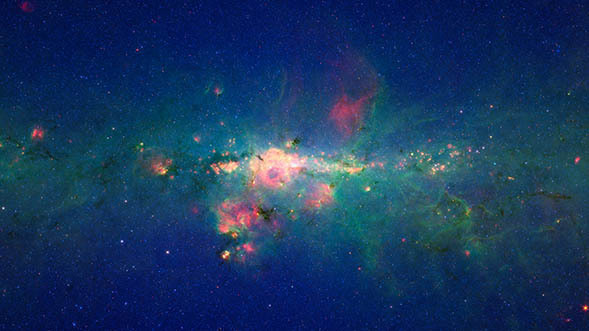
This plot shows data captured by Spitzer's IRS instrument, indicating a strong signature of water vapor in the disk of gas and dust surrounding a young star.
The Infrared Spectrograph was one of Spitzer's three science instruments. It provided both high- and low-resolution spectroscopy at mid-infrared wavelengths (from 5 -- 40 microns).
Like a prism breaking up light into a rainbow, a spectrograph takes the incoming infrared light from a distant object and breaks it up into a spectrum. Each chemical element in the universe has its own light signature in the spectrum, like a unique fingerprint. By studying the spectrum of light from a distant object, astronomers can tell what elements and molecules the object is made of. Spitzer observers used this method to find water on a planet orbiting another star, among many other uses.
The IRS had four different modules: a low-resolution, short-wavelength module detecting light with wavelengths at 5.3 -- 14 microns; a low-resolution, long-wavelength module for observations between 14 and 40 microns; a high-resolution, short-wavelength module covering 10 -- 19.5 microns in high detail; and a high-resolution, long-wavelength module for detailed observations between 19 and 37 microns. Each module had its own entry slit to let the infrared light into the spectrograph.
The detectors arrays were 128 x 128 pixels in size. The short-wavelength detectors were treated with arsenic, and the longer-wavelength silicon detectors were treated with antimony. The IRS had no moving parts.



